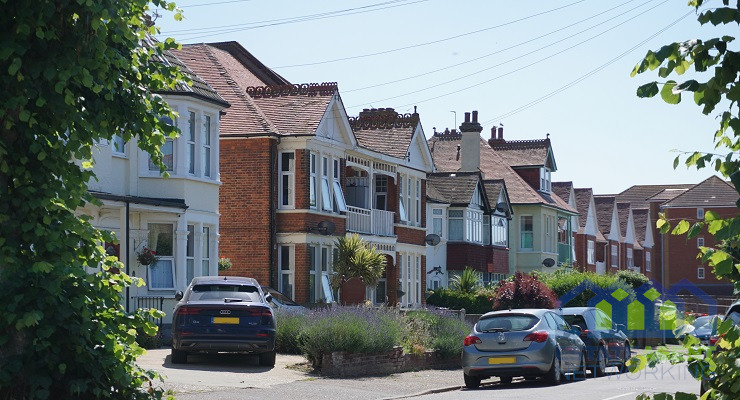The UK’s shared ownership hotspots
Estate agent comparison site, GetAgent.co.uk, has looked at where across the UK is home to the highest demand for shared ownership housing.
Shared ownership is a more affordable route to getting onto the UK property ladder and while it isn’t as popular as buying outright, it does have a number of additional benefits for buyers such as a smaller deposit, the potential to increase equity over time and a cheaper monthly cost.
GetAgent.co.uk looked at where was home to the largest amount of shared ownership property for sale across the UK’s major cities and which cities had the largest homebuyer appetite for shared ownership homes based on buyer demand across listings on Zoopla.
Most shared ownership homes
When it comes to straight-up stock levels, it’s evident that shared ownership is a niche route to homeownership with just 0.9% of all stock listed for sale across the UK’s major cities falling into the shared ownership category.
Cambridge was home to the highest amount of shared ownership housing for sale with 5.4% of all stock listed for sale falling into the category, followed by London (2.1%), Plymouth (1.7%), Birmingham (1.4%) and Southampton (1.3%).
The most in-demand shared ownership hotspots
On average, demand for shared ownership properties listed across the UK’s major cities sits at 32% based on the ratio of homes under offer or sold subject to contract as a percentage of all homes listed for sale.
When it comes to the highest buyer demand for shared ownership properties, Sheffield tops the table with a huge 60% of all shared ownership properties listed for sale, already under offer or sold subject to contract.
Leeds ranks second with demand at 54%, followed by Nottingham (54%), Plymouth (50%) and Birmingham (45%).
Founder and CEO of GetAgent.co.uk, Colby Short, commented:
“Previously we’ve seen a stigma of sorts surrounding shared ownership but it can be a great way to get on the ladder, albeit only partially, for those that would otherwise be stuck in the rental sector due to affordability issues.
In fact, the research shows that this negative perception may no longer be the case as demand for shared ownership property is actually very high in the majority of UK cities where affordability is often at its lowest.
However, the level of shared ownership stock remains minute compared to the wider market and we could certainly benefit from a greater level of shared ownership availability as there is clearly an appetite for it.”
|
Rankings – shared as a % of total properties
|
|
|
City
|
Shared – as % of total
|
|
Cambridge
|
5.4%
|
|
London
|
2.1%
|
|
Plymouth
|
1.7%
|
|
Birmingham
|
1.4%
|
|
Southampton
|
1.3%
|
|
Oxford
|
1.2%
|
|
Portsmouth
|
1.2%
|
|
Bournemouth
|
1.0%
|
|
Leeds
|
1.0%
|
|
Liverpool
|
0.9%
|
|
Manchester
|
0.8%
|
|
Leicester
|
0.8%
|
|
Bristol
|
0.6%
|
|
Nottingham
|
0.6%
|
|
Newcastle-upon-Tyne
|
0.4%
|
|
Newport
|
0.3%
|
|
Sheffield
|
0.3%
|
|
Swansea
|
0.1%
|
|
Cardiff
|
0.0%
|
|
Glasgow
|
0.0%
|
|
Edinburgh
|
0.0%
|
|
Aberdeen
|
0.0%
|
|
Belfast
|
0.0%
|
|
Average:
|
0.9%
|
|
Rankings – shared demand
|
|
|
City
|
Shared – demand
|
|
Sheffield
|
60.0%
|
|
Leeds
|
54.0%
|
|
Nottingham
|
53.8%
|
|
Plymouth
|
50.0%
|
|
Birmingham
|
44.9%
|
|
Southampton
|
44.8%
|
|
Bristol
|
43.8%
|
|
Leicester
|
42.9%
|
|
Bournemouth
|
37.5%
|
|
Liverpool
|
35.8%
|
|
Manchester
|
29.7%
|
|
Oxford
|
28.6%
|
|
Portsmouth
|
26.7%
|
|
Newport
|
25.0%
|
|
Cambridge
|
20.0%
|
|
London
|
20.0%
|
|
Newcastle-upon-Tyne
|
16.7%
|
|
Cardiff
|
0.0%
|
|
Swansea
|
0.0%
|
|
Glasgow
|
0.0%
|
|
Aberdeen
|
x
|
|
Belfast
|
x
|
|
Edinburgh
|
x
|
|
Average:
|
31.7%
|









